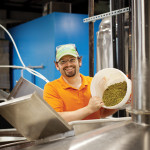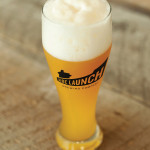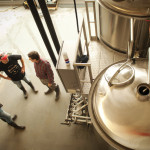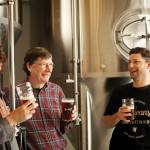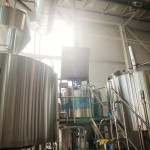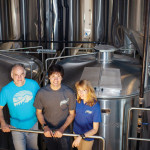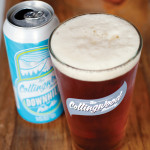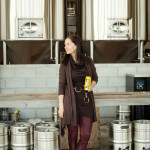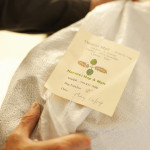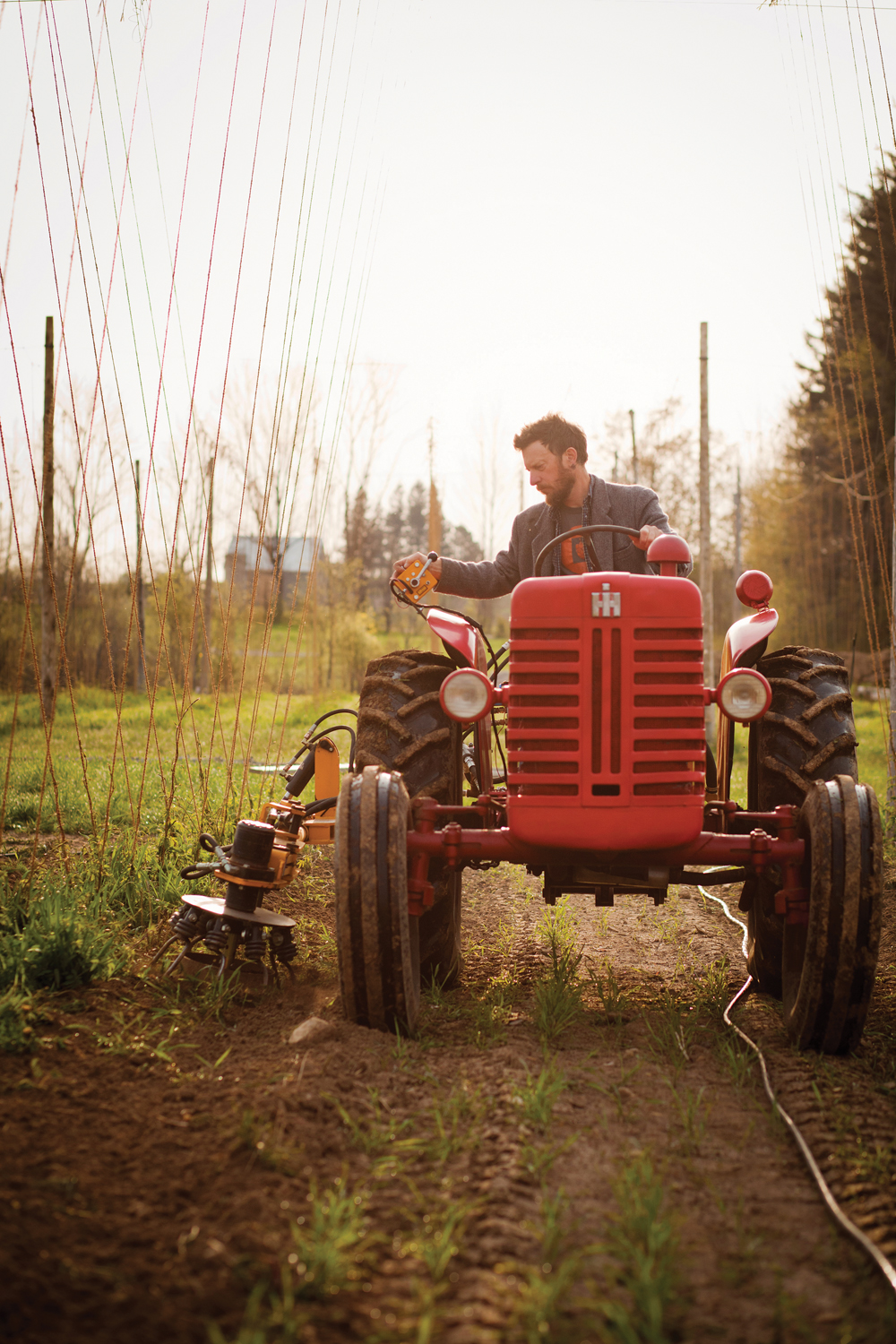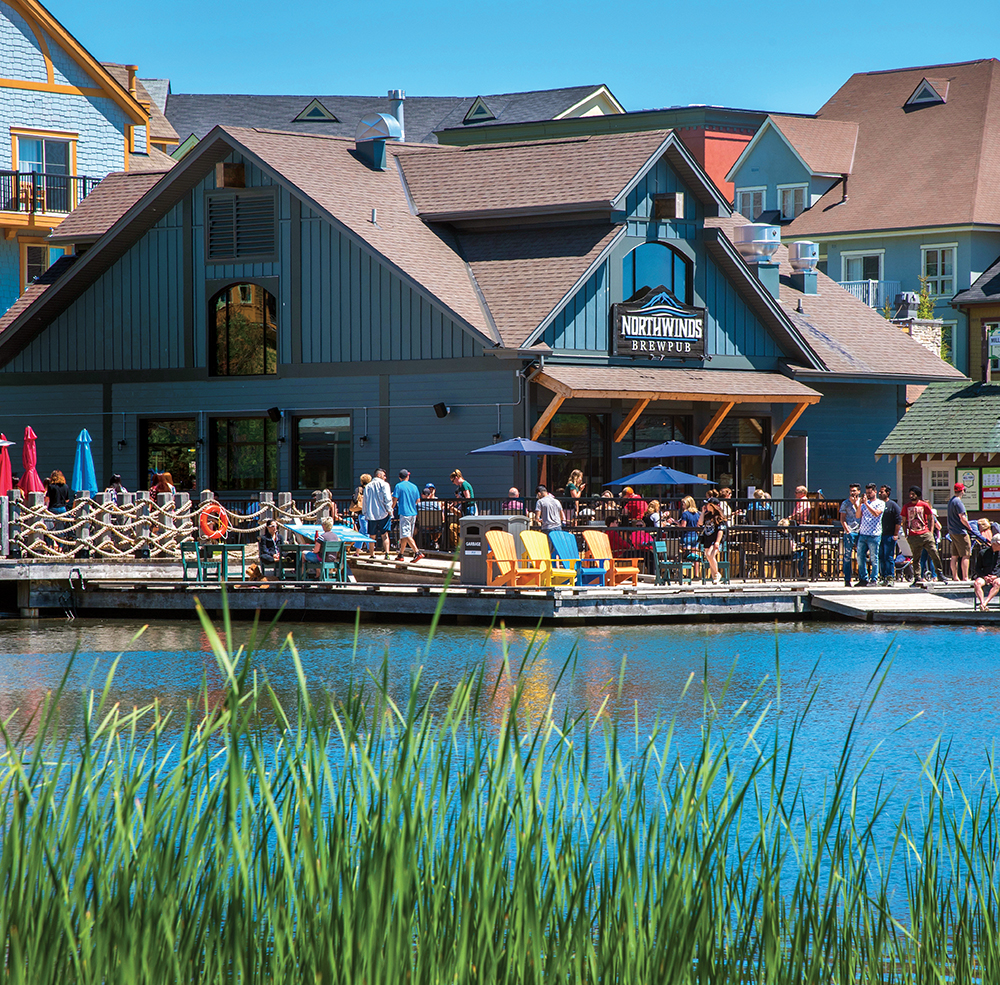Craft breweries are springing up all across our region, making award-winning beers with unique local flavours
by Emily Worts, photography by Kristie & Brenden Woods
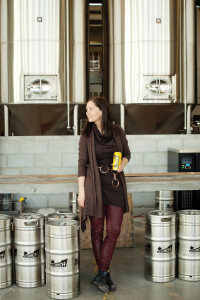
There is a beer renaissance going on in Southern Georgian Bay that is attracting the attention of beer aficionados, tourists and localistas alike. Two new craft breweries recently opened in Collingwood, and a Collingwood brewhouse and eatery is set to open any day. In Meaford, a 23-year-old man has been brewing award-winning beer for the past year and a half. And following a huge provincial grant infusion, a 30-year-old craft brewing business is moving its operations to Hanover.
With so many new craft breweries in our area, you would think there would be cause for concern over market share. But it’s not so, says Garnet Pratt Siddall, president and CEO of Side Launch Brewing Co. of Collingwood.
“What is going on in the industry right now is really exciting,” says Siddall. “Ninety-five per cent of the beer market is big brewers. Craft brewers aren’t going to fight over that five per cent; they want to get the other 95 per cent to drink great beer.”
That shouldn’t be a tough sell. Added to a craft beer’s base of malted barley, hops, yeast and water are the whims and fancies of highly skilled brewmasters who have been honing recipes, based on taste rather than profit, for years. Craft breweries – relatively small independent operations using age-old techniques to produce a variety of beers – have the freedom to add natural and often local ingredients like fruits or vegetables, spices, honey and maple syrup to make their beer stand out.
Ontario’s beer market is undergoing a major shift as a result of a conscientious awareness of where our food and drink come from and a desire for more variety when it comes to premium, high-quality beer. According to the Ontario Craft Brewers (OCB), an association of about 35 small brewers, there are over 60 small breweries operating in Ontario – up from a small handful in all of Canada three decades ago. The art of craft brewing is a trend that isn’t going away. The average growth rate in sales for Ontario craft brewers was over 10 per cent with approximately $210 million in sales in 2012. The LCBO recently announced its financial results for the 2012/13 fiscal year, with Ontario craft beer sales showing higher sales growth than all other product sectors.
Chris Freeman, head brewer and one of the founders of The Collingwood Brewery, looks like a kid in a candy shop. For the past few years he has been testing beer recipes – trying to balance the sweetness of fermented barley malt with the bitterness of hops – in his home kitchen. Today he is surrounded by bags of malted barley, shiny new state-of-the-art equipment and beer tanks that will dispense tall single-serve cans, 750 mL bottles and keg after keg of the new brewery’s signature beer, Downhill Pale Ale, a 5.4 per cent American-style pale ale.
After graduating from the Niagara College Brewmaster program, Freeman went to Creemore Springs to refine his craft. Wanting to spread the tradition of craft brewing, he teamed up with three beer-loving friends to break into the growing market of craft brewing.
“We’re planning for success,” says Freeman, “It’s ambitious. We could have started smaller, but once you’re going you can’t stop production to replace equipment to keep up with demand.”
Freeman says Collingwood Brewery’s 4,500-square-foot space, on Sir Sanford Fleming Drive, is small in the grand scheme of things, but for a craft beer start-up it is impressive. A classy timber frame entrance leads visitors into a tasting room with sleek epoxied cement floors, 20-foot ceilings and large windows overlooking the brewing equipment. An industrial glass garage door opens to a patio where Freeman hopes a food truck will be parked on most weekends, providing light fare for visitors. The brewery hosts guided tours on weekends or by appointment and the space can be rented with room for 100 guests and a stage for a band.
“The goal is to make it a destination,” says Freeman.
With so many craft breweries springing up across our area it is not unreasonable to think a ‘beer trail,’ much like our area’s food trails or Niagara’s wine trails, will soon stretch from Barrie to Owen Sound and across to Hanover. Providing an experience, along with innovative marketing strategies, are all part of the craft brewers’ attempts to keep up and maybe even outsmart the big players of the brewing industry.
In the 1980s a resurgence of Canadian independent brewing began. In that first wave of pioneers, marketing executive John Wiggins started Creemore Springs Brewery, introducing drinkers of mainstream beer to an amber-hued lager using darker malts and pure spring water. The beer, fired under a copper kettle, was fermented for a shorter time and was an instant success – so much so that it was bought by Molson in 2005, proof of a growing demand for craft beers.
Wiggins’ vision began with a local market and grew into a national brand. Small towns set the stage for the majority of brewery start-ups across Ontario, where they can become anchor businesses, employing locals and attracting food tourists.
Maclean’s Ales, founded by Charles Maclean over 30 years ago, is moving its operations to Hanover. Once Ontario’s smallest brewery, in its new location Maclean’s will increase output 17 times over and employ eight new people in the short term and 15 to 20 in the next five years. With the help of an Ontario government Local Food Fund grant worth close to half a million dollars, Maclean’s will also be able to purchase a lot more local hops and malted barley, which can be twice as expensive as imported ingredients, says Michael D’Agnillo, Maclean’s vice president. “I think people are tired of the same old same old from larger breweries,” says D’Agnillo. “All the beer has tasted the same for so many years. It’s a very unfortunate thing to have happened to our palates.”
With the ever-increasing awareness and desire for all things local, it is nice to know that not only the beer industry and beer drinkers but also the provincial government are catching on.
“It’s about time,” says D’Agnillo. “The government has changed its tax system and flipped it around. After so many years the smaller breweries are finally taxed less than the big guys and it’s become more affordable for the smaller guy.”
The new re-branded Maclean’s ale will now be available in 100 LCBOs versus only seven a couple of months ago. “The LCBO has been phenomenal,” says D’Agnillo. “They are another part of the puzzle that is driving us. It has really been a positive experience for the craft beer industry.”
In April of this year Ontario finance minister Charles Sousa, along with LCBO president and CEO Bob Peter, announced a pilot program of 10 LCBO Express stores, in grocery retailers (much like the Wine Rack), featuring a large selection of Ontario craft beer. The LCBO is also encouraging small brewers to produce single-serve cans and bottles to satiate the growing trend of consumer experimentation.
“Look at the Collingwood LCBO,” says D’Agnillo. “Their beer section is booming and it’s a mix of different people trying several different types of beer.”
Despite the LCBOs efforts, Geoff Conway, owner of Northwinds Brewhouse & Eatery, has no intention of listing in either The Beer Store or the LCBO.
“It’s an extremely unique concept for this area,” Conway says of his brewpub and restaurant, which will brew several types of beer on site and have seating capacity for 100 people. “We will produce several beers on site with a full-service menu, but I will not be selling to the LCBO or Beer Store.”
The 5,000-square-foot Northwinds space, located on Collingwood’s First Street, will have brewing vessels making beer predominantly to service the on-site restaurant, and on a limited basis other local restaurants. The small retail outlet adjoining the restaurant will carry Northwinds beer in two sizes of single-serve bottles, along with branded merchandise.
The brewpub’s draft lineup will feature a full range of Northwinds’ own beers, and from time to time will bring in other Ontario craft brews. “We focus on select beers, to be unique to the region,” says Conway.
To date, Northwinds brewmaster Andrew Bartle has produced four types of beer, but that number will increase to six or eight once the eatery is up and running in mid-July. “Hopefully by the end of August we’ll be offering 10 to 14 different styles of beer, including both ales and lagers” says Conway, adding, “We wanted to show the market that we intend to produce a variety of styles.”
Unlike Northwinds, which will not be producing beer on a mass scale, Side Launch has set its sights on the big league of craft brewing – its dark lager won a gold medal at this year’s Ontario Brewery Awards and its wheat beer won silver.
“Our goal, for sure, is to play in that league, with Steam Whistle and Mill Street,” says Siddall. “That’s the level we want to get to. We have the quality of the beer to get there.” Side Launch took over the Agnora Glass factory on Mountain Road in Collingwood with over 27,000 square feet.
“It’s more space than we need at the moment,” says Siddall. “We have enough room to expand for the next five to 10 years.”
The Kilannan Brewing Company, named after the hamlets of Kilsyth and Annan, in the municipality of Meaford, is only a year and a half old, but already 23-year-old owner Spencer Wareham has had to completely gut the site. The year-old equipment has been replaced by new technology, doubling Kilannan’s capacity to 20,000 litres of production a week. Kilannan’s New Zealand Amber Ale won a gold medal at this year’s Ontario Brewing Awards and its German Altbier, available at the LCBO, will soon be joined by a second year-round German Kolch beer.
Wareham began home brewing in his parents’ Meaford basement when he was 17 years old and as soon as he turned 21 (the age of majority in the United States) he headed to Chicago’s Siebel Institute of Technology, the oldest brewing school in the U.S. He earned a diploma in brewing technology at Munich’s Doemens Academy before returning to his hometown.
“It’s a great feeling,” he says of his job. “I am excited to go to work each day for the most part. If I want to do a different beer I can fire up my pilot system and rock that out. The final product is fun to make and people really enjoy it.”
Craft brewing carries with it a sense of patriotism and tradition. Historically, Ontario’s economy was built on beer, along with fur and lumber, but two world wars, prohibition, a depression along with big business and mass production nearly pushed the art of craft brewing into oblivion. The renewed popularity of craft beer not only provides consumers with unlimited choice but the industry is breathing renewed life and energy into many small Ontario towns. New business including tourism, festivals and agriculture are directly connected to the craft beer market. Local restaurants are enhancing local inspired menus with beer made around the corner. It is a win-win situation with beer lovers benefitting the most from increased choice and flavour when it comes to sitting on a summer patio and sipping the ultimate thirst quencher: a frosty pint. ❧






